PPP Funding – Ideas for Maximizing Impact
Now with the PPP funds making their way to our accounts, many of us are trying to figure out what the hell to do next. My restaurants are closed, many people have locations partially open for take-out and delivery, and some of us have gone into the toilet paper and fruit basket business. There is also the PPP question of bringing back teams and when to do it to maximize the benefit to your employees and your business.
There is no one-sized fits all approach to be sure, but since we are lucky enough to have this incredible network of fellow restaurateurs, and our friend and resident CPA expert Raffi Yousefian from RY CPAs, we thought we would pull together some industry insights and some thoughts on potential ways to forge ahead.
What we heard from you:
Last week we sent out a survey to try and understand how our network had adapted, what was going well and where there were pain points (beyond the obvious). We captured the insights from almost 400 restaurants from around the country with four major themes emerging…how you changed your business structure, how teams changed, and a complicated relationship with third party delivery.
We tackled each with a lens on what we heard and how we might look at the path ahead.
New Business Structure
What we heard:
We have been tracking closures across our data set and even though we know they are impacted differently in terms of operating status and model, we actually saw the closure percentage in full-service vs non-full service track almost identically around 40%.
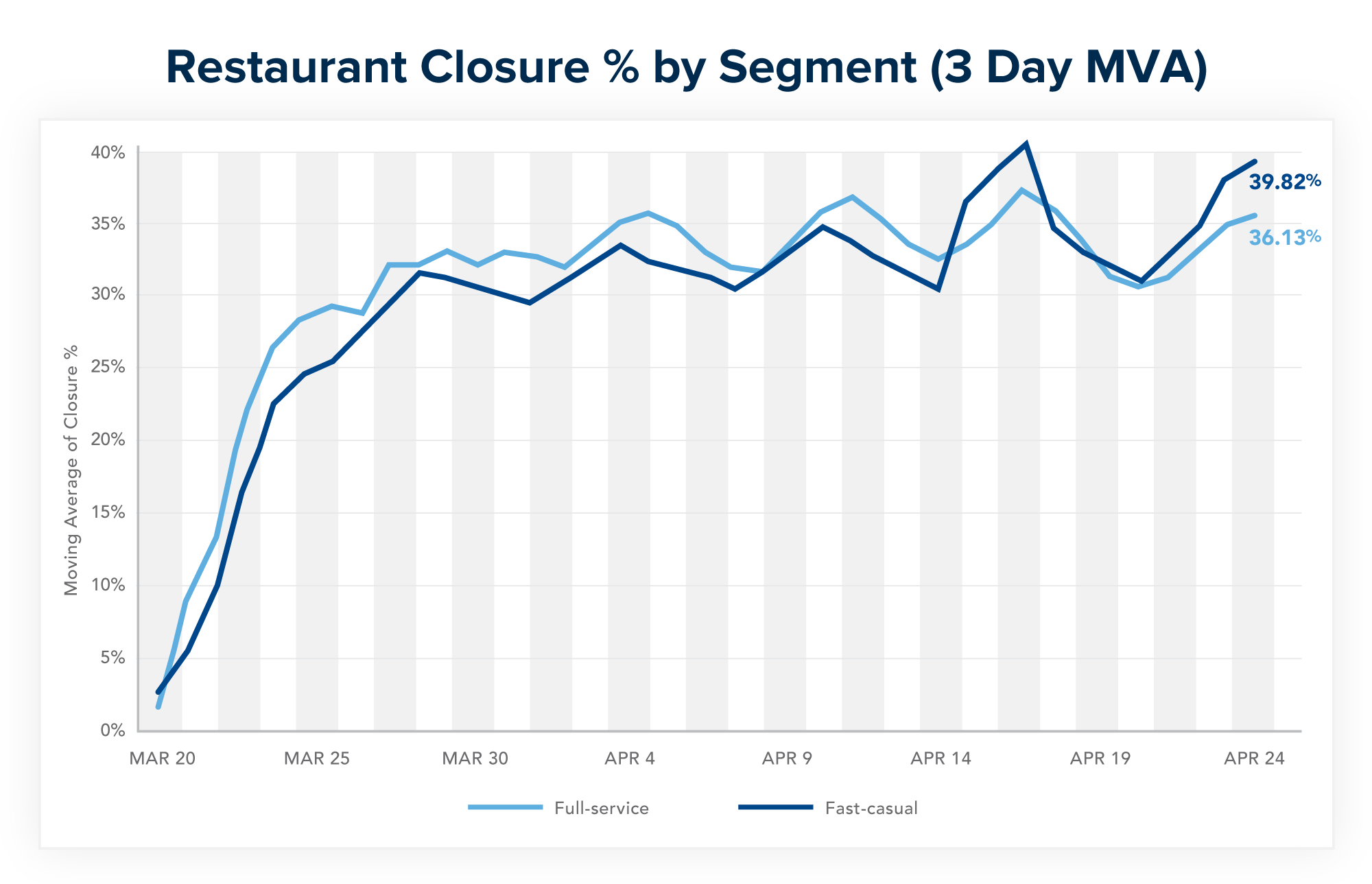
Even the restaurants that are open are having to make substantial changes to do business. We asked restaurants if their models felt “The same,” “Somewhat the same. We had to make some shifts, but largely had the infrastructure in place,” or “Totally different.” Then we broke the responses out between fast-casual and non-fast casual.
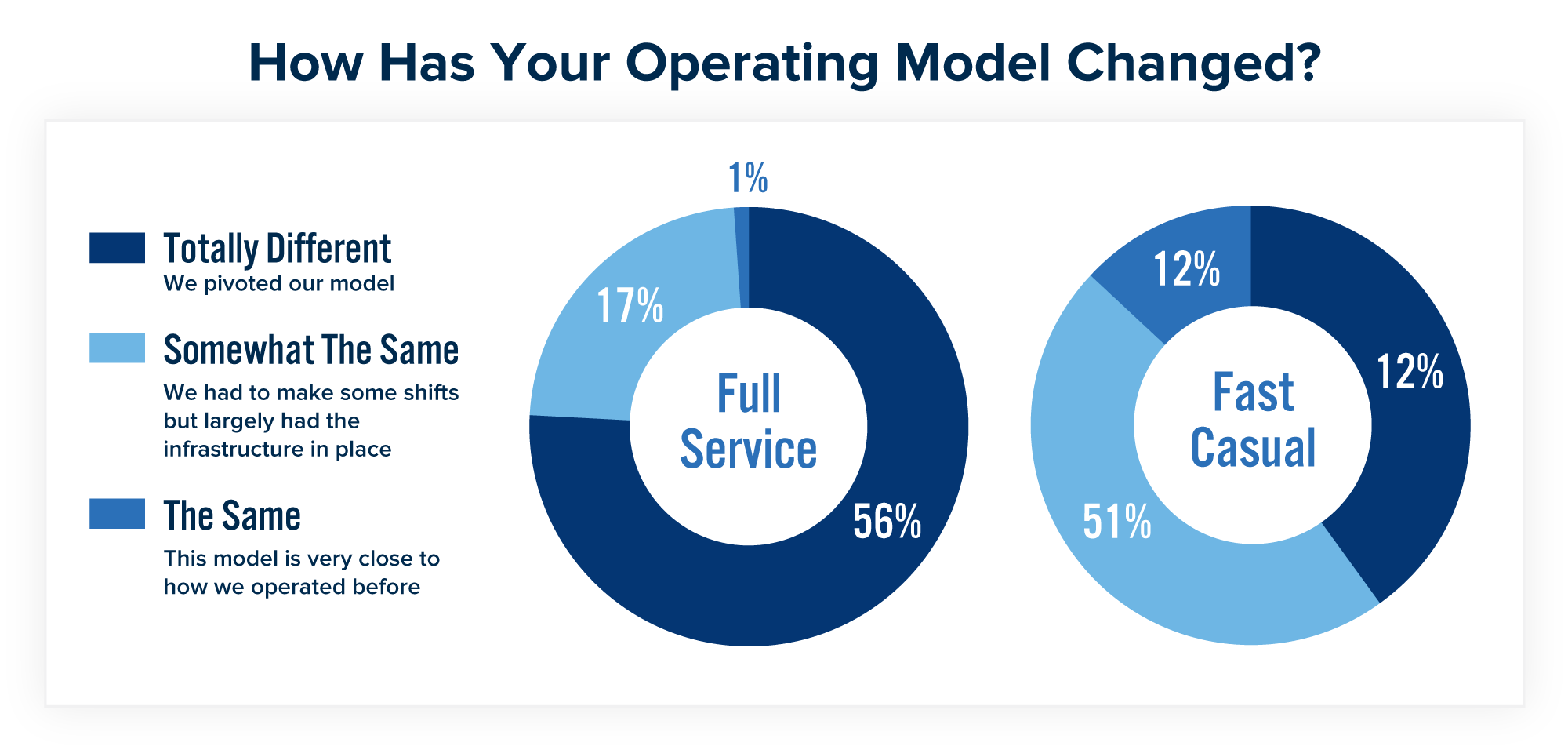
It’s no surprise that we saw that a higher percentage of fast casual models were able to keep their model the same or somewhat the same while full-service showed a high percentage of needing to pivot their models completely.
In either case, 16% of our survey responses said that moving quickly and taking immediate action was the most impactful decision you made during the crisis. We’re impressed with just how much and how quickly restaurants had to adapt.
Potential paths:
So for those still open and operating, it has been a sprint to stand up a new model and work out the kinks in real time. PPP funding may mean that you can beef up your workforce and bring team members in to analyze the impact of the decisions you’ve made so far, and strengthen your takeout and delivery operations.
For those that are closed, increased manpower likely gives you some freedom for projects you have felt were important but haven’t had time to do, and investment in things that set you up better than before when your doors reopen.
Here are a few things we think might be worth your time in both cases.
-
New Sales Patterns
Everything is different. Full service places have had to rapidly convert to take out and deliver only. Fast casual has seen a dramatic drop off of take out and increase in delivery. For those of us opening and operating some extra hands can help understand how your sales have changed. Maybe your top menu performer before doesn’t translate well to take out? Maybe a new menu item has taken center stage and you want to be sure it is as valuable to your business as possible.
Your customers may have also changed. If you were primarily driven by foot traffic and regulars you may have a whole new group of customers coming through third party delivery apps or stir crazy quarantiners looking for something new. It would be valuable to know if you have new “peak sales days” and potentially an opportunity to drive sales on slower days with targeted marketing.
-
Menu Changes
Our survey revealed that for many in our network a meaningful shift in menu had made a meaningful impact. We heard that family style meals and allowed for production at lower labor costs margin.
Options that allow for a change of pace from cooking while feeding the whole family or maximize flexibility and freshness by allowing people to cook on their own timeline seem to make a meaningful addition to a menu.
We are all having to think creatively about high margin items like alcohol, raw goods or even a subscription model to generate repeat revenue.
-
Recipe Analysis
Now is the perfect time to do a deep dive on your current menu offering or start to structure your reopening menu. We know that the ramp up on the other side of this is going to be gradual, so margins are going to be more important than ever. Understanding the food cost per menu item, and what items are your biggest drivers can help make strategic decisions on menu design, marketing and ordering. This is sometimes a “we’ll get to it one day” type of thing, but with team members onboard that can help now – through our weekly webinar series and individual one:one training (the latter for a limited time).
If you are a MarginEdge customer our platform supports all of this analysis and we have extra training for your team if this is something you want to tackle. Not a customer? Happy to set you up with this for free until September if it can help you with refining and rebuilding.
Team Structure
What we hear:
Only 17% of those we surveyed were able to keep more than 50% of their team with 36% operating with only ownership/managers. We heard everything from taking out a second mortgage on your home to pay your team to furloughing employees quickly so they could maximize their unemployment insurance options.
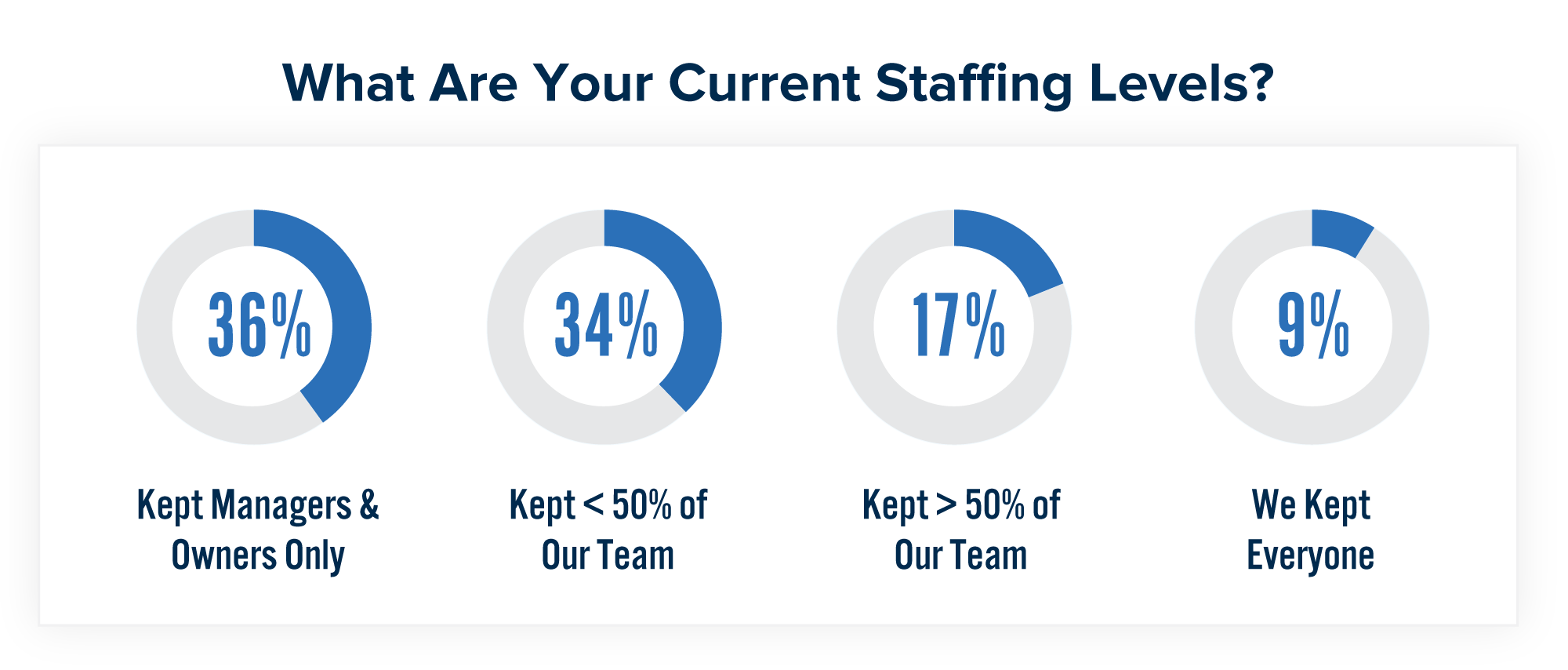
With many of us receiving PPP funding we will have to decide who to rehire, for what roles and when does it make most sense to do it?
If you are weighing your options be sure to check out Raffi’s four different staffing scenarios in our first post here.
No matter which is best for your business, the reality of the PPP structure means you will likely be keeping or increasing payroll between now and June.
Potential Paths:
Let’s say you decide to get some of your team back in action. What are high impact things that make a difference immediately and set you up for the best outcome when you reopen.
-
Insource Delivery
We do a deep dive into the world of third-party delivery a little later in this post, but there seems to be a huge opportunity with insourcing your delivery options. With PPP funding you do have to apply it toward payroll, but you do not have to rehire the same people, or you can rehire the same people but to different positions. If you decide to explore this route Raffi says, “Ensure you fully understand insuring your employees as drivers. This can be a huge opportunity to earn back margin on delivery orders, but be careful of the insurance risk.”
-
Inventory Clean Up
With inbound inventory volumes lower than usual (in many cases zero) it might be just the right time to tackle your sheets and systems. When volume starts to tick up, or the day you reopen your doors, understanding costs in real time will be more valuable than ever before.
We know this is stating the obvious. We also know it sucks. So consider this our nudge to consider deploying some of your team on this clean up expedition.
-
New Partners
It is impossible to predict what things are going to look like on the other side of this, but it might be just the right time to start vetting potential new partners with your available man hours. Understanding new options for touchless transactions, new inventory systems, revamping your online ordering interface might make a difference now and help you build into the new normal.
Use this time to bolster your pick up and delivery customer experience might be valuable for the long haul. Many vendors are offering reduced pricing or free services in order to help our industry get better during this time (us included!) and having your team explore these options could be a valuable use of time.
Delivery
What we heard:
Nothing was more evident in our survey results than our love-hate relationship with third party delivery partners. In some cases the visibility of our business on their platforms and ease of searchability has been crucial in driving customers to our restaurants. In other cases that same impact means we are paying commissions on orders that we would have fielded without their platform if we had been able to drive traffic to our sites directly.
We took a quick look at our data set and unsurprisingly delivery is a much larger proportion of sales than just a few weeks ago.
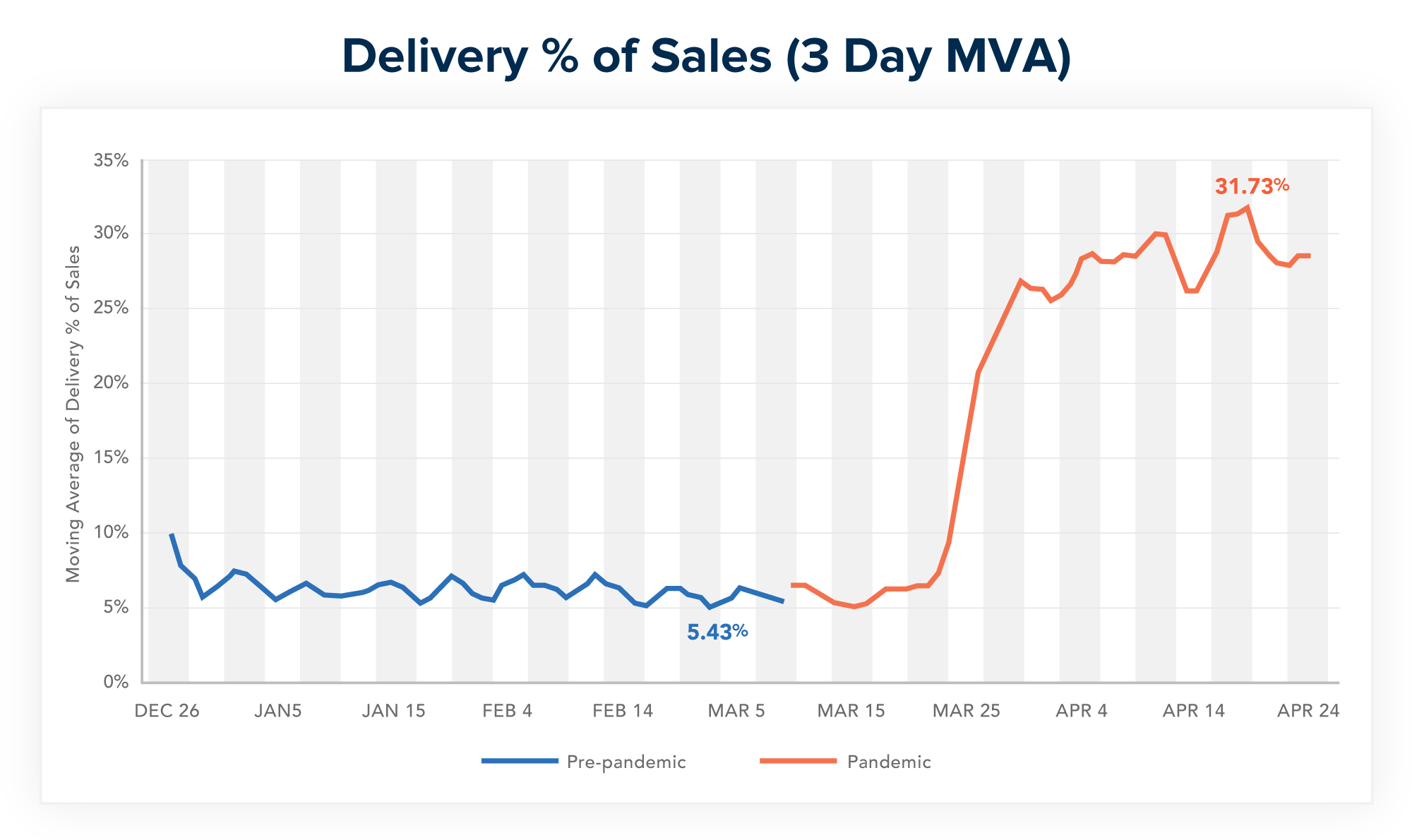
Our survey results showed this distribution of services used, interestingly with 12% reporting a shift to insourced delivery.
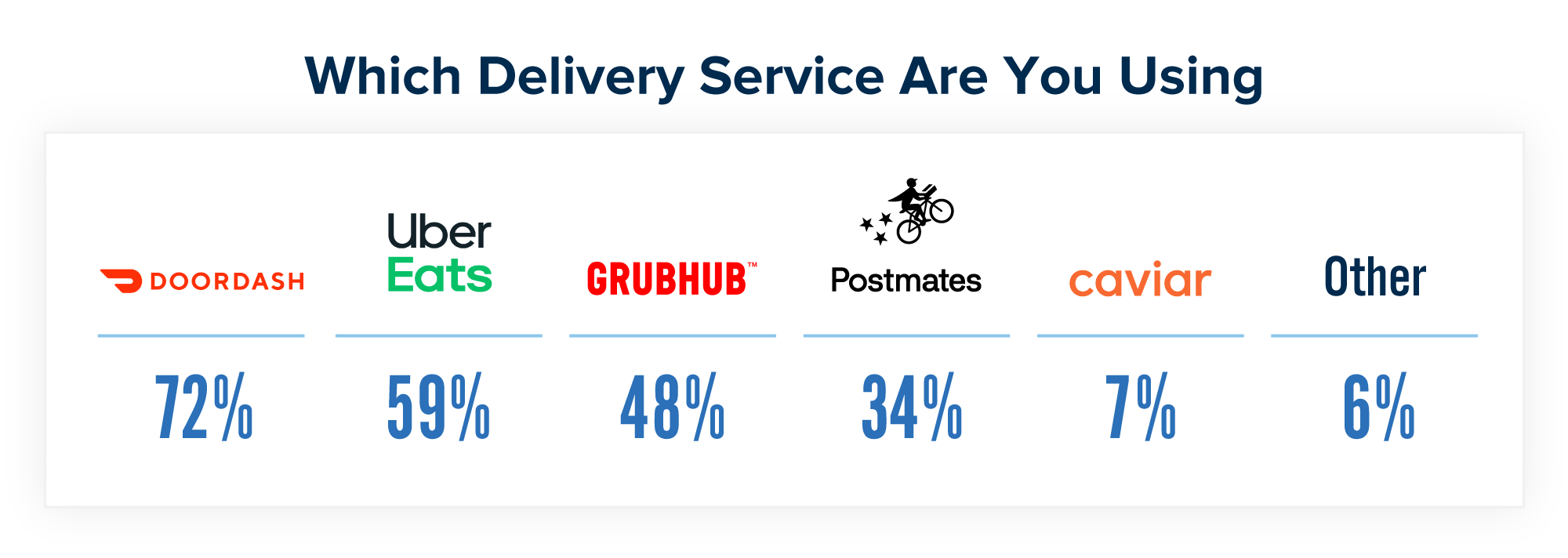
Potential paths (in addition to insourcing that we mentioned earlier):
-
Incentives for Pickup or Curbside
If you are paying 20-30% commission to delivery services, then passing some of those savings along to your customers might make sense. You could put prominent prompts on your site and use other marketing channels to encourage this behavior vs delivery.
-
Look for Local Alternatives
We are starting to see new options crop up as businesses want to reduce their dependence on third party delivery platforms. Consumers are increasingly dialed in to the sometimes negative impact of the commission structure and are likely open to an alternative if you communicate it clearly.
-
Menu Adjustments for Delivery
One of the biggest things we heard from the survey was inconsistency in service and delivery times which resulted in food arriving cold or not as originally packaged. If you know that some meals travel better than others you could adjust the menu posted to the delivery sites to only include what you know is the most durable.
Also Raffi recommends looking at a delivery menu through the lens of margins. “If you have very high margin items or dishes, prioritize them with your delivery service and save your popular but lower margin items for your takeout menu. This might also have the impact of driving more takeout orders if people are looking for a specific item.”
Many of the responses on our survey said that they passed the commission along to the customer by adjusting menu prices across the board, which is an elegantly simple solution if your pricing/customers can stomach the jump.
-
Invest in Marketing
For many restaurants the delivery dynamic isn’t just logistics, it is visibility of their business. These platforms have seen huge jumps in customers which has translated to marketing for restaurants. Reducing your dependency on third party delivery providers also means an increased marketing presence.
We are planning on a marketing specific post but some things to consider may be outreach to local publications and email lists, creating temporary specialty items that create buzz and help break through the noise, be loud about any philanthropy you are doing in your community and think of clever ways to get noticed on social media.
We loved these Fauci Pouchys from our friends at Capo Deli in DC. Designing a menu item that got a lot of local traction on social media and picked up in local publications. These link directly to your website and can help drive direct traffic and bypass the delivery platforms.
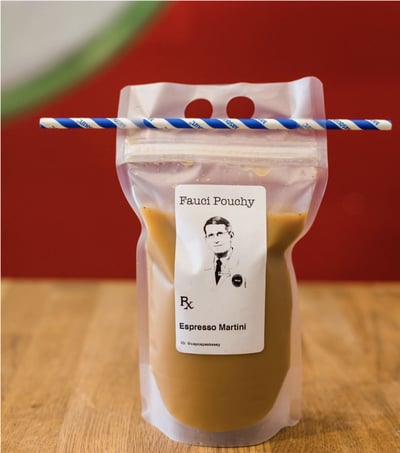
To Wrap Up
No question we’ve all had to get creative, and our adjustments have been as diverse as our industry. Our hope is that with PPP funds flowing, and potentially rebuilding your team, this provides some insights into what others are doing and some ideas of what might make an impact on your path ahead.
We are offering our full platform to new clients free until September to either understand your new normal or get ready for reopening. Find out more information here. If you are a MarginEdge customer and want to increase your use of the platform or hop on additional free training, signup anytime.

